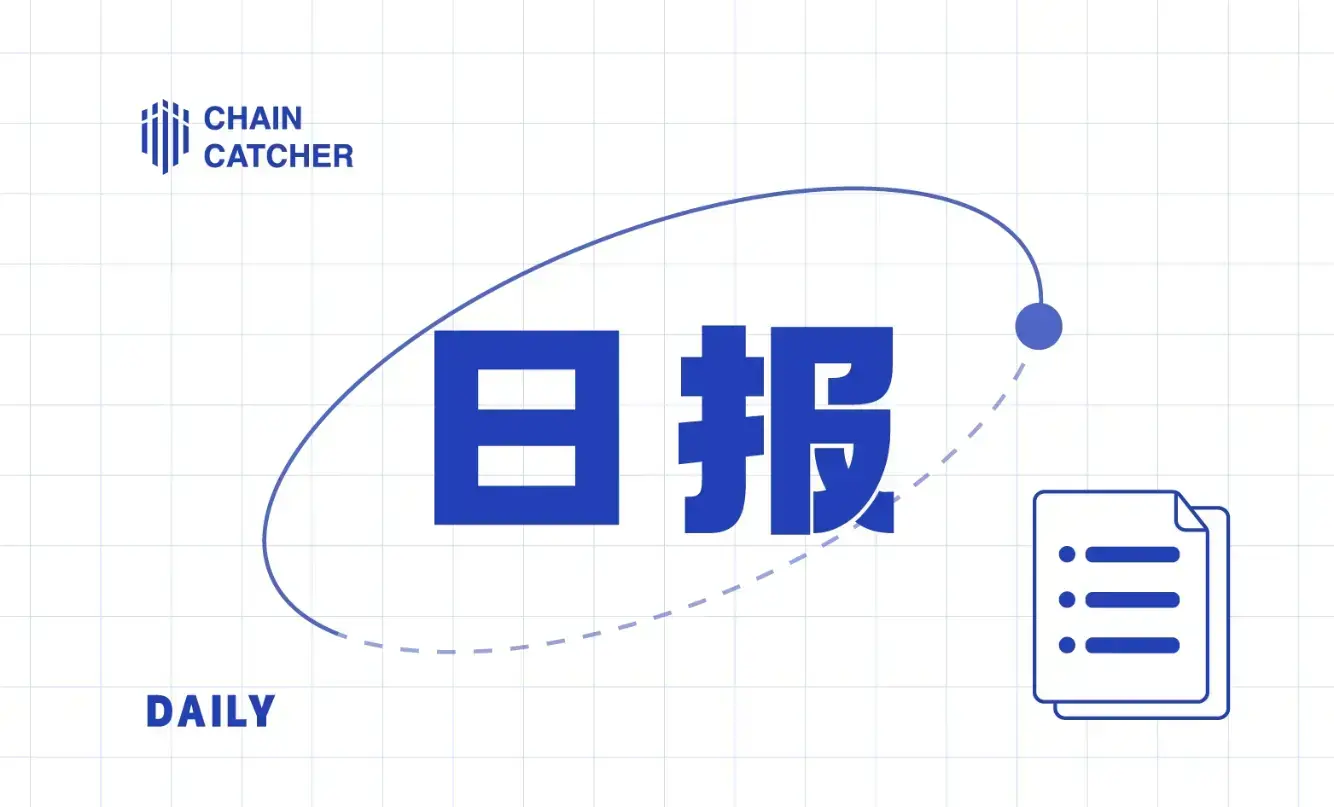How does Chainge, as a "self-financial" infrastructure service provider, realize its vision based on cross-chain roaming and time slicing?
Written by: Frank
In the previous article titled "Understanding Chainge in Three Minutes: An Application Aggregation Platform for Free Fund Transfers in DeFi", Chainge was briefly introduced as a DeFi application aggregation platform. Unlike most existing DeFi aggregators, it has launched features such as cross-chain roaming, time slicing for earning, a "full-category DEX" friendly to derivatives, and mnemonic code QR codes.
From the perspective of user perception, Chainge is more like a "self-finance" infrastructure service provider. It uses the Orange Wallet as a "super application" to package underlying technologies like DCRM and time slicing, providing users with basic DeFi services such as cross-chain roaming and derivatives trading, helping users create unlimited and diverse financial services based on their needs in a one-stop manner.
Chainge: Providing Basic Components for the Self-Finance World
Unlike the segmented financial services provided by centralized institutions in the traditional financial world, DeFi itself has strong self-finance attributes. On-chain DEX, lending, futures, options, and other trading modules involving different transaction chains can be diversified and freely combined like Lego, without permission and boundaries.
Among these, "flash loans" are the best carriers and manifestations of DeFi's self-finance attributes—composability means that innovations in self-finance can be infinitely amplified.
From this perspective, Chainge Finance is positioned as an application of "self-finance" and "inclusive finance":
Using Chainge (Orange Wallet) as a "super application," Chainge provides basic DeFi services including cross-chain aggregation and options futures trading, aiming to be the entry point for the Web 3.0 value internet, connecting financial needs with financial services through code, thereby becoming a "self-finance" infrastructure service provider.
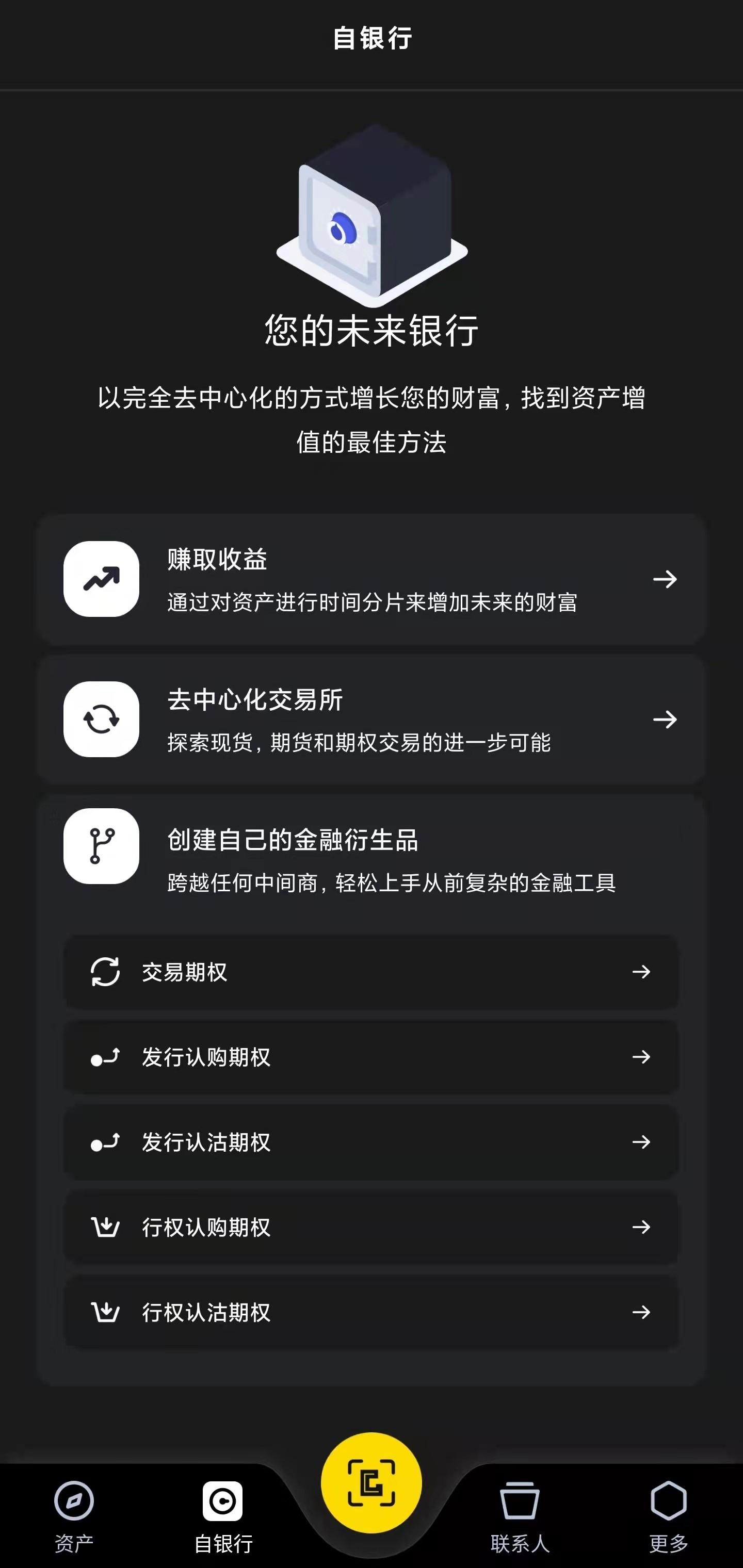
Chainge is like a one-stop, easy-to-use DeFi editor, allowing users to build their own self-finance world just like assembling Lego blocks, thus enabling anyone to become a "self-bank" or "self-finance" entity:
People can form connections of value on Chainge, and when financial services are needed, they can dynamically create smart contracts with special financial functions with one click, allowing users and enterprises to easily create financial derivatives or develop suitable products based on market demand and target audiences.
As of November 5, Chainge's current TVL is approximately $93.24 million, with a 24-hour trading volume of about $500,000, and the overall user activity level is in the early stages of development.
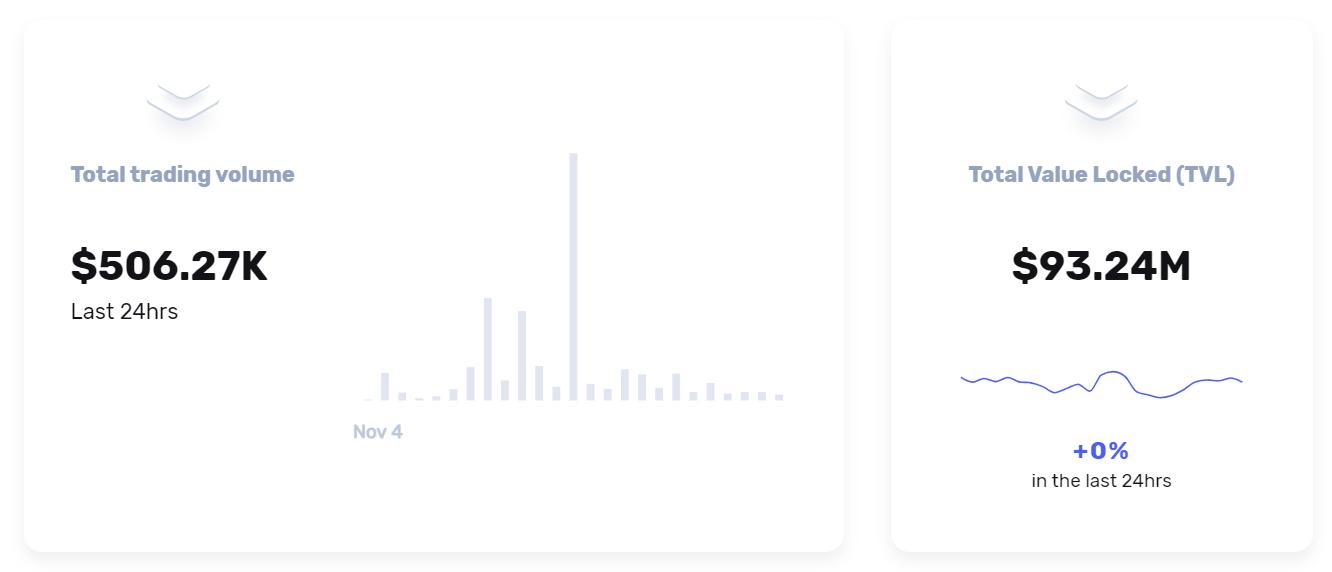
Cross-Chain Roaming (FUSION DCRM)
Since the beginning of this year, the rise of competing public chains like BSC has driven explosive growth in the cross-chain sector, where the importance of cross-chain bridges as a market necessity has gradually become apparent, leading to a significant value reassessment in the past three months.
Especially with the further expansion of Ethereum L2 and the self-contained ecosystems of public chains like Solana and Terra, the demand for cross-chain services in a multi-chain, multi-layer market structure will become a market necessity. In this context, refined cross-chain product services have become the main direction of competition.
FUSION DCRM
Little known in the market is that the underlying architecture widely adopted by mainstream cross-chain projects such as Fantom Bridge, Anyswap, and Nerve is FUSION's DCRM distributed cross-chain communication technology, making it a time-tested cross-chain underlying technology.
According to publicly available data, as of November 3, the total TVL of cross-chain projects using Fusion DCRM technology, such as Anyswap, Multichain, Nerve, and Fantom Bridge, has exceeded $10 billion, with a 24-hour cross-chain fund volume exceeding $300 million.
|---------------|---------|--------------|---------| | Name | TVL (USD) | 24-Hour Trading Volume (USD) | 3-Month Growth | | Anyswap | 4.73 billion | 9.6 million | 572% | | Fantom Bridge | 117 million | 530 million | 1003% | | Nerve | 14.11 million | 120,000 | 82% |
However, most cross-chain bridges in the market currently operate in a "chain-to-chain" peer-to-peer cross-chain service format, where users primarily use them as tools for cross-chain asset conversion from one chain to another, lacking the seamless cross-chain exchange capabilities of "centralized exchanges."
Cross-Chain Roaming
Chainge, leveraging FUSION DCRM cross-chain technology, has introduced the "cross-chain roaming" feature, which represents a further innovation compared to "cross-chain bridges":
Unlike the "chain-to-chain" peer-to-peer interactions provided by mainstream cross-chain bridges in the market, in "cross-chain roaming," users do not need to prepare assets on a specific chain for on-chain transactions and other DeFi services. Even if assets are distributed across five or more chains, users can still complete on-chain transactions, provide liquidity, and mint financial derivatives in one step.
In other words, the "cross-chain roaming" feature can minimize users' awareness of the "cross-chain" action, achieving a so-called "invisible cross-chain" experience.
For example, if I want to exchange USDT for TRX, I do not need to first transfer the corresponding asset (such as USDT in TRC format) to the Tron chain and then conduct the USDT/TRX transaction.
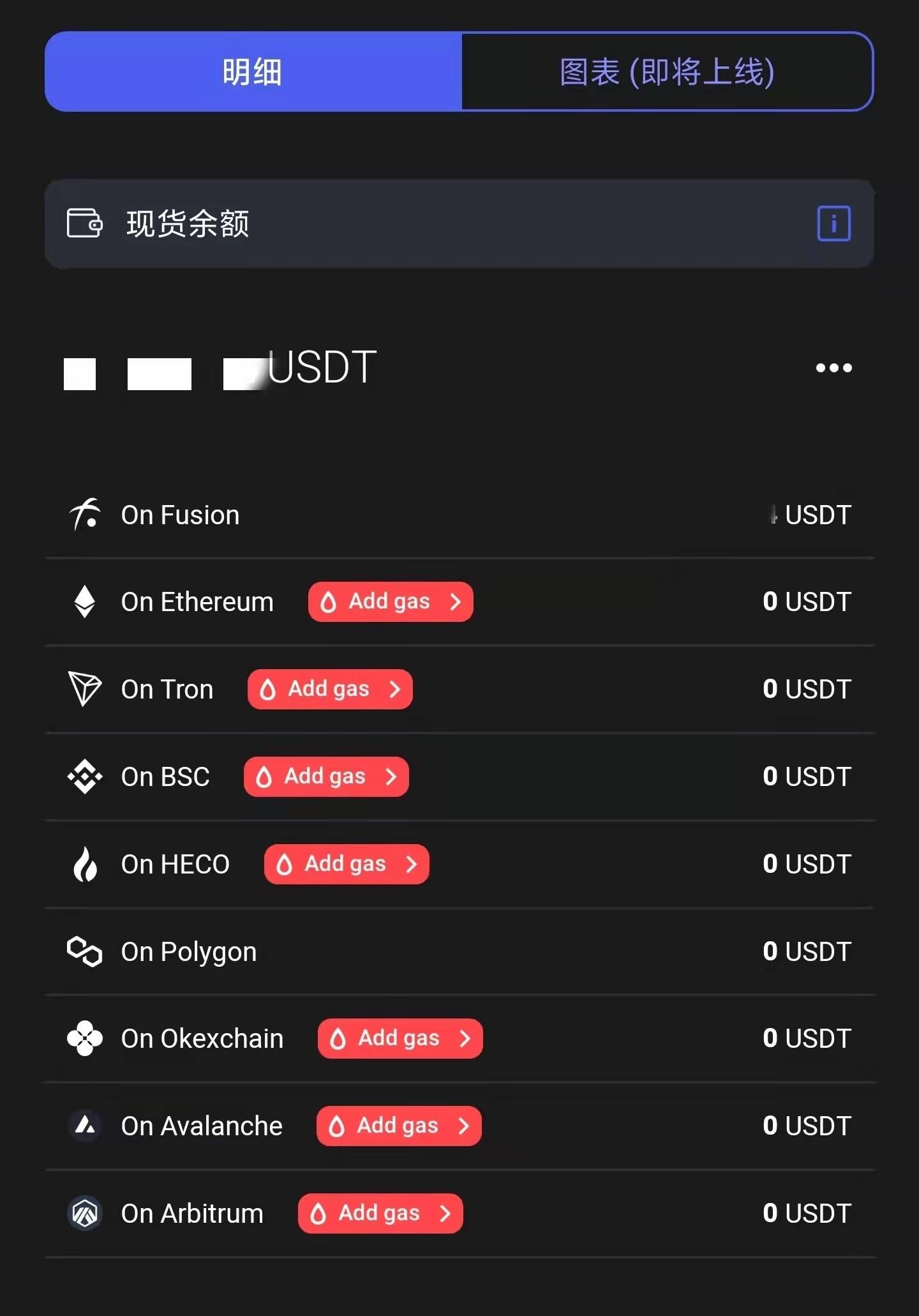
Instead, I can directly exchange my assets distributed across FUSION, ETH, Polygon, BSC, and other chains (using USDT as an example) for TRX on the Tron chain in one step.
The following image shows my direct cross-chain exchange of USDT assets on the FUSION chain for TRX assets on the Tron chain, with all operations completed in one step from an operational perspective, making the "cross-chain" process almost imperceptible, and the entire process achieved within a minute.
This process is essentially similar to the cross-chain services of "centralized exchanges": it allows for seamless, instant cross-chain exchanges of assets across different chains, but the difference is that Chainge achieves this in a decentralized manner.
In other words, Chainge's "cross-chain roaming" is a step further than traditional cross-chain bridges, realizing decentralized cross-chain asset transfers and exchange operations at a "centralized exchange" level.
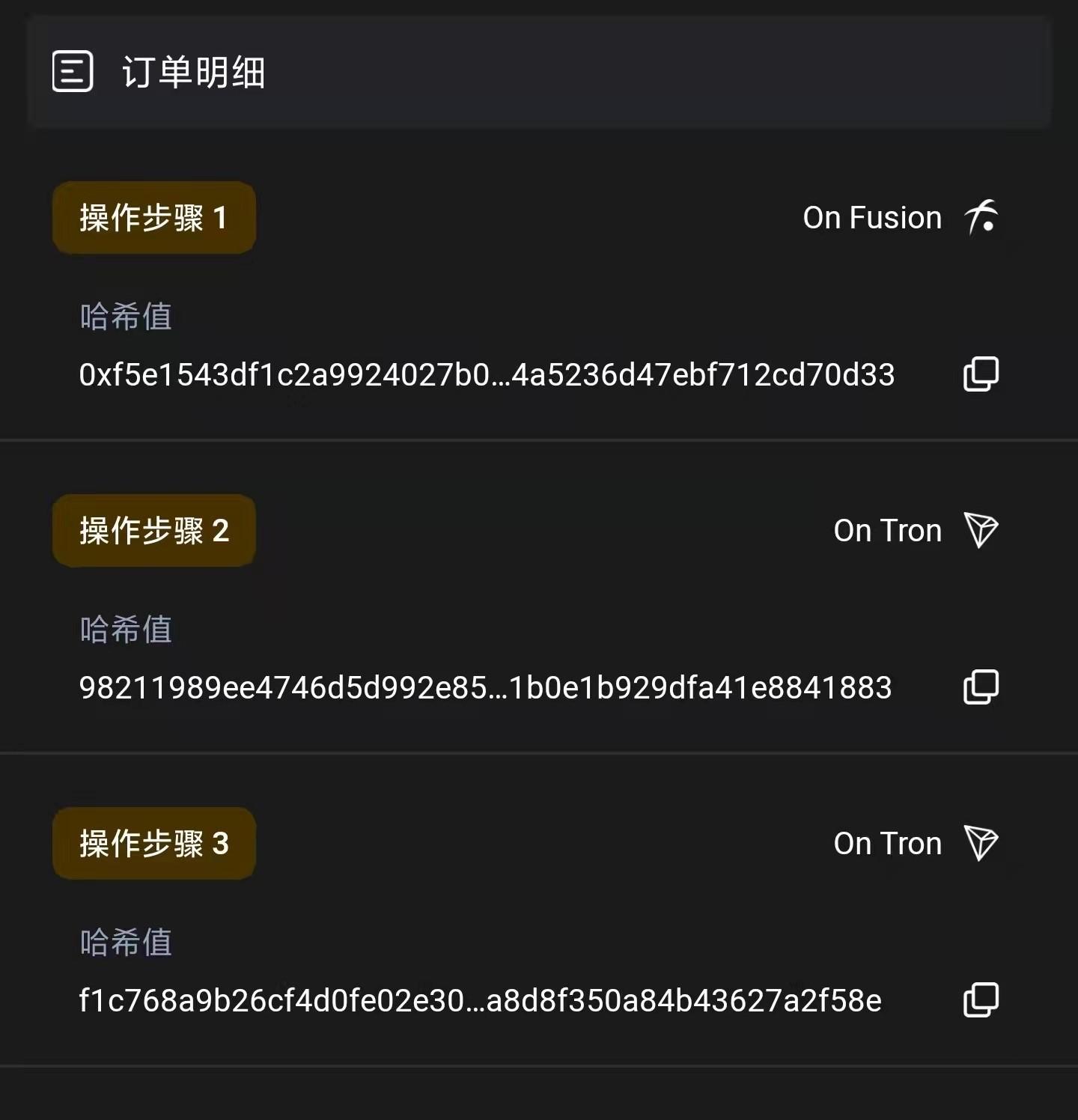
At the same time, "cross-chain roaming" not only supports one chain in, one chain out, but also supports multiple chains in, one chain out, enabling users to aggregate cross-chain funds across multiple chains. Essentially, Chainge, relying on the Chainge (Orange Wallet) platform, provides users with a service scenario similar to "fund cross-chain aggregation."
From this perspective, it not only effectively simplifies the complexity of user interactions on-chain but also reduces cross-chain costs and the likelihood of losing coins due to complex multi-step operations.
In summary, "cross-chain roaming" can be understood as a "cross-chain aggregator" that encapsulates underlying technologies and achieves seamless operations at the user level—users do not need to consider the concept of "chains."
As of the publication date, Chainge has supported cross-chain roaming across 14 chains, including Bitcoin, Ethereum, Fusion, Tron, BSC, OKExChain, Avalanche, Heco, Arbitrum, Polygon, Fantom, Elastos ESC, and Filecoin, essentially covering the mainstream public chains and Layer 2 blockchain networks.
Currently, the one-click Gas feature has also been launched, and the operational process is quite smooth, allowing users' assets to complete cross-chain transactions in a matter of seconds while ensuring decentralization, thus effectively enhancing users' capital utilization efficiency and lowering the understanding and operational thresholds for users, providing a strong infrastructure guarantee for the goal of building a truly meaningful "self-finance" financial aggregation platform.
Time Slicing
The "time slicing" technology used by Chainge (Orange Wallet) can be simply understood as setting an expiration date for the ownership of an asset and then slicing it into two different periods from a time dimension, thereby forming spot assets and futures assets corresponding to disposal rights and ownership.
Futures
Moreover, the "time slicing" process is implemented through contract logic and presented in the form of two different assets, so under such "time slicing," behaviors like asset lending are no longer a process but a trading action:
Users can sell the sliced spot assets, equivalent to a lending operation, thereby only holding the futures assets that symbolize ownership in the future.
At the same time, users can also use the earning feature in the Orange Wallet to earn interest on futures assets, and unlike other DeFi applications, the user's coins always remain in their own address, not in a smart contract, and since the assets are completely insulated from risks due to logical flaws in smart contracts, they are entirely immune to "flash loans."
For example, if a user has 10,000 CHNG coins and continuously earns coins through "time slicing," there is no loss in coin value, and they can earn new coins almost risk-free (provided they do not leak their mnemonic phrase) while keeping the coins in their own address.
Options
Furthermore, after generating futures assets through time slicing, corresponding options operations can also be performed:
Issuing options means pledging futures assets. The options issued against the futures assets remain in the individual's possession, and the options can be canceled and the futures assets withdrawn at any time before they are exercised.
- CO = call option, also known as a call option, requires corresponding futures issuance. For example, issuing CHNG-CO requires TF-CHNG;
- PO = put option, also known as a put option, issuing any PO only requires TF-USDT;
So if the options are sold, the pledged futures will have two outcomes:
- If someone exercises the option, the individual will receive the corresponding U at the exercise price;
- If no one exercises the option by the expiration date, then after the option expires, the individual can retrieve all the coins;
Users can also participate in liquidity mining for options within the wallet, using CHNGCO or CHNGPO along with USDT to form LP for liquidity mining.
However, it is important to note that if the futures are liquidated before the expiration date, a certain price difference must be paid, which depends on the market's buying and selling volume. Theoretically, as the expiration date approaches, the price difference will gradually trend towards zero.
This means that unlike traditional centralized options issuance institutions like CME, users can create options trading on their own through the "time slicing" options feature in Chainge (Orange Wallet), and the entire "self-finance" process is implemented through contract logic, achieving complete decentralization without the need for asset custody or other centralized services.
Overall, the "time slicing" process has decentralized and automated all aspects related to futures, options, and other derivative operations, ensuring both security and continuous yield (in terms of coin value).
Chainge's DeFi 3.0 Vision: Metaverse Finance
In short, the entire Chainge is essentially centered around the cross-chain roaming protocol, using DEX as a decentralized exchange tool, and based on this, a series of efficient derivative financial protocols with nearly zero marginal costs have emerged—passive earning protocols through time slicing, decentralized options protocols, interest rate markets, decentralized collateral custody protocols, and more financial protocols of the Web 3.0 ecosystem will continue to emerge.
Thus, in Chainge's view, all individual DeFi protocols, including DEX, lending, stablecoins, yield farming, etc., essentially belong to "DeFi 1.0"—users can only passively choose and use relatively singular on-chain financial services, akin to merely replicating traditional financial services in a decentralized form on-chain.
Chainge: A "DeFi 2.0" Platform
On this basis, Chainge leans towards being a "DeFi 2.0" platform, further pushing DeFi towards SelFi, i.e., the self-finance world, allowing users to freely use all individual DeFi financial services and even create their own innovative financial models by freely combining different DeFi Legos.
For instance, in Chainge, users can use decentralized custody to establish trustless business relationships with strangers: a fisherman’s son from Nigeria can do business with a girl from New York University, and throughout the process, neither party needs to know who the other is, while both parties' assets will be protected by decentralized code architecture.
At the same time, on Chainge, users can also establish their own decentralized options and futures, enabling the free exchange of value across time: a startup founder from Romania can create decentralized company options for a founder in Vietnam to share company value, and these options can also be traded in Chainge, executed strictly according to the decentralized code architecture to ensure asset security.
Additionally, in Chainge, users can use cross-chain roaming to establish any type of multi-chain compatible DApp, so developers only need to create a DApp on Ethereum to immediately access all blockchain users in Chainge, and users' encrypted assets can roam freely and securely under the protection of decentralized code architecture.
DeFi 3.0 Vision: Metaverse Finance
What if we go further on this basis? Since the physical world has financial needs, the metaverse also has financial needs. Under unified infrastructure and standard protocols, each user can gradually combine their self-finance practices to form unique DeFi "metaverses" that belong solely to them.
Chainge's current plan is precisely this, aiming to provide a bridge between physical world financial services and the Metaverse, such as:
- Providing time slicing technology in applications to allow residents in the Metaverse to earn yields without risk;
- Offering Swap services in applications for value interaction in the Metaverse;
- Providing decentralized futures, options, and other financial derivatives in applications to serve the financial derivative needs of the Metaverse;
In the future, there are even plans to provide protocols (decentralized escrow protocols) so that residents in the Metaverse can conduct business and create new financial scenarios, meaning that almost all commercial activities based on trust and credit elements can be realized through the basic DeFi infrastructure services provided by Chainge.
From this perspective, Chainge's ultimate vision is to further expand the scope and possibilities of self-finance—to become a financial service provider in the Metaverse, dedicated to building infrastructure that connects different metaverse boundaries, thereby achieving interconnectivity of assets and even gameplay between users.
In summary, Chainge aims to use code to build all financial service needs for the Metaverse.
Conclusion
In addition to the aforementioned technical innovations of "cross-chain roaming" and "time slicing," Chainge has also adopted various unique design details in terms of product user-friendliness, and these innovative designs at the product level truly represent a qualitative leap in user experience, especially for new users.
For example, the "account type" selection is divided into "expert mode" (Onchain, self-custody of mnemonic phrases) and "novice mode" (Offchain, mnemonic phrases are hosted on servers).
There is also a unique design for "encrypted mnemonic QR codes"—the mnemonic phrases are encrypted, allowing them to be saved as corresponding encrypted QR codes in image form, enabling users to store mnemonic phrases in a more flexible manner while ensuring security.
Additionally, the decentralized escrow service (similar to fund escrow guarantees in platforms like Taobao and Xianyu) that it plans to expand in the future essentially leans towards the letter of credit business in the traditional financial world, continuously reflecting the new boundaries that DeFi can expand compared to traditional finance.
In short, Chainge, using Chainge (Orange Wallet) as a carrier, encapsulates underlying technologies like DCRM and time slicing, providing users with basic DeFi component services covering cross-chain roaming, derivatives trading, and interest-earning, thereby helping users create complex financial logic and derivative services without limits based on their needs within the "super application" of Chainge (Orange Wallet), forming a new financial ecosystem that encompasses almost everything like traditional banks, stock markets, bond markets, futures options, letters of credit, etc.
This vision of creating a "self-finance" ecosystem that serves everyone through a super entry point is highly imaginative and also quite challenging.




